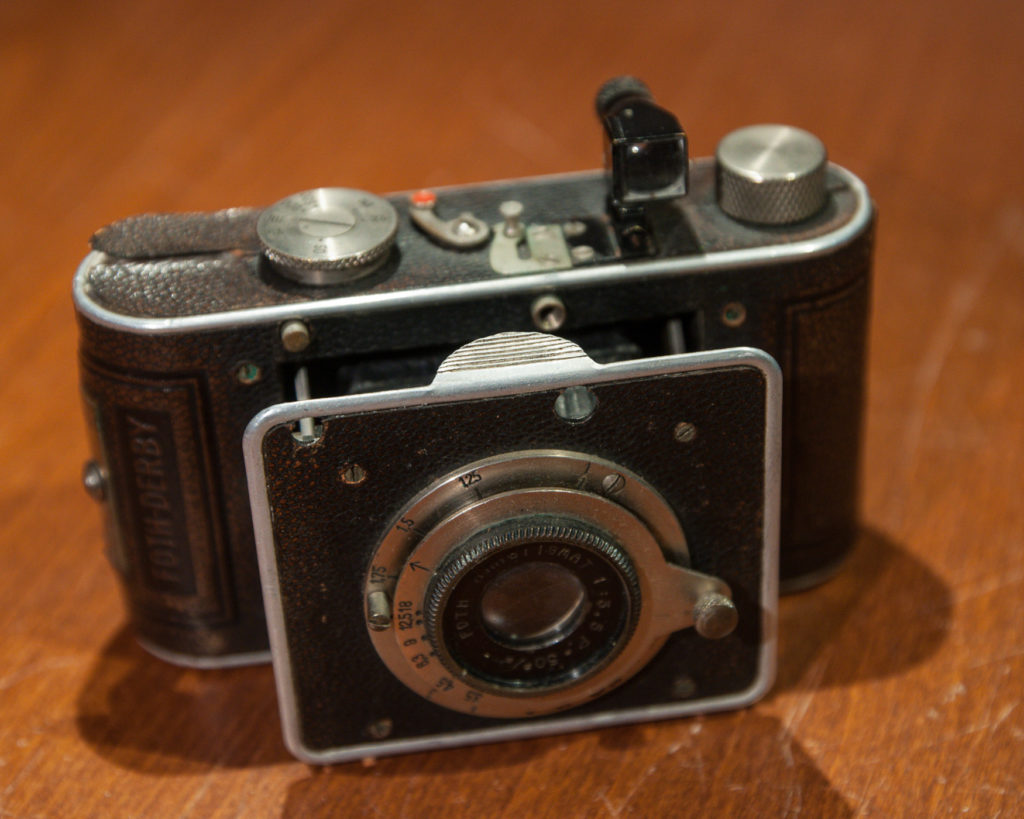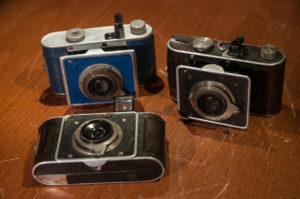analog photography, camera, Camera History
The Foth Derby: A German Folding Strut Camera with Remarkable Features
The Foth Derby, a remarkable folding strut camera manufactured by C.F. Foth & Co. in Germany, presents a captivating alternative to the renowned Leica and Contax cameras. Produced from 1930 to approximately 1940, this camera was designed to offer photographers a more cost-effective option without compromising on quality. Competing directly with the Kodak Vest Pocket camera, it utilized the widely-used 127 format film, originally developed for the Vest Pocket. Let’s delve into the fascinating features and evolution of this exceptional camera.
**1. The Foth Derby and Its Film Format**
The Foth Derby initially embraced the 24 mm x 36 mm film format, similar to that of the Leica. However, a redesign in 1931 allowed the camera to take advantage of the larger 127 format film. This enhancement enabled the creation of sixteen stunning images measuring 30 mm x 40 mm. By utilizing the increased film size, the Foth Derby ensured photographers could capture more detailed and vibrant photographs.
**2. Quality Construction and Lens Options**
Despite being marketed as a more affordable camera, the Foth Derby maintained a high standard of construction. The camera boasted a range of quality lenses, providing photographers with versatility and excellent image clarity. One noteworthy lens was the 5cm f/2.5 Foth Anastigmat, which featured four uncoated elements. This lens allowed photographers to achieve exceptional results, delivering sharp and well-defined images across various focal lengths.
**3. Advanced Features and Functionality**
The Foth Derby came equipped with a focal plane shutter, offering photographers control over their exposures. With shutter speeds ranging from Bulb (B) to an impressive 1/500 seconds, the camera allowed for precise adjustments to capture fast-moving subjects or control long exposure shots. Additionally, the camera featured a convenient self-timer, enabling photographers to include themselves in their compositions or take group shots without relying on a third party.
**4. The Built-In Rangefinder and Other Additions**
In its later years, the Foth Derby offered an optional built-in rangefinder, further enhancing its functionality. This addition enabled photographers to accurately measure distances and achieve precise focus, ensuring optimal image sharpness. The rangefinder feature cemented the Foth Derby’s position as a versatile and capable camera, catering to the evolving needs of photographers.
**5. Historical Background of C.F. Foth & Co.**
Founded in Berlin, Germany, in 1926, C.F. Foth & Co. was established by Carl Friedrich Foth, a skilled Dutch mechanic. Although limited information is available regarding Carl Foth’s personal history, it is believed that he was born in the late 1800s, possibly in the Netherlands. He later relocated to Gdańsk, a city situated in either the German Empire or independent Poland, depending on the time of his arrival.
**Conclusion**
The Foth Derby, a remarkable folding strut camera produced by C.F. Foth & Co., emerged as an enticing alternative to the esteemed Leica and Contax cameras. Combining affordability with exceptional features, this camera captured the attention of photographers during its production from 1930 to approximately 1940. With its versatile film format, quality lenses, advanced shutter mechanism, and optional rangefinder, the Foth Derby provided photographers with a reliable tool for capturing stunning images. As a testament to its enduring craftsmanship, the Foth Derby remains a coveted piece of photographic history.


